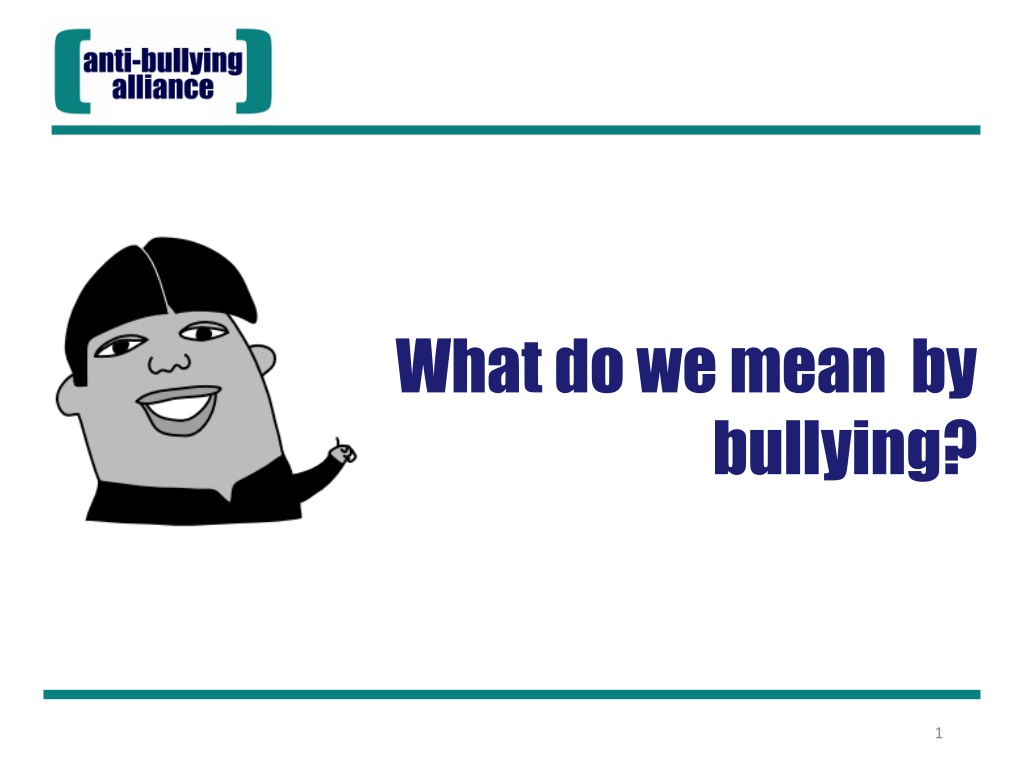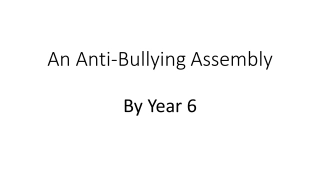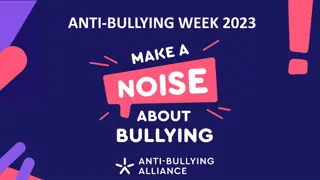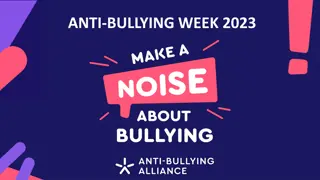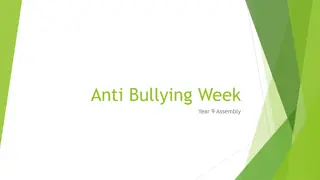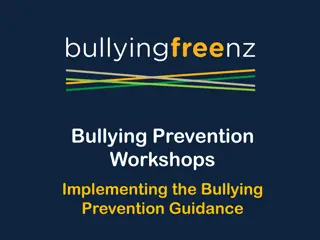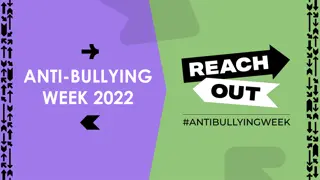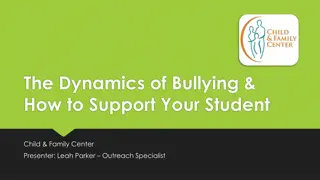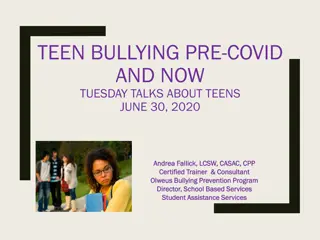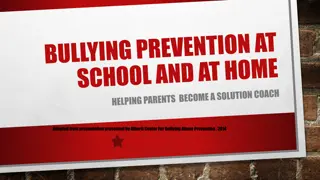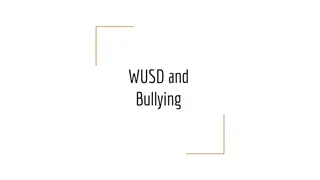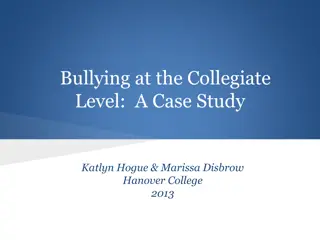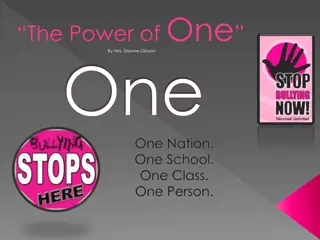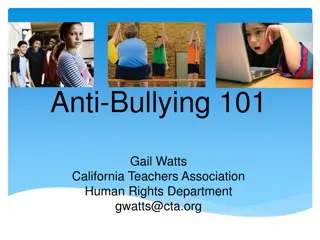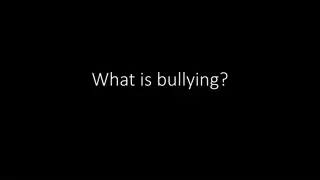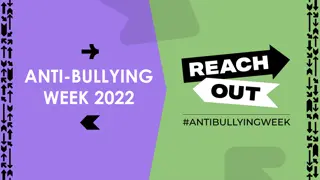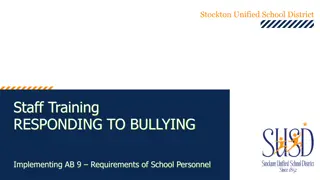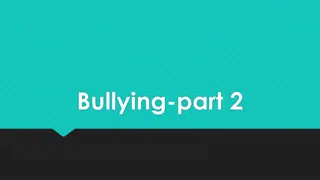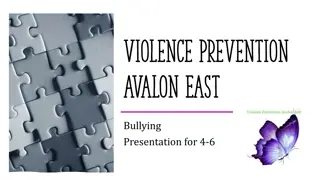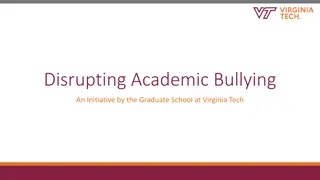Understanding Bullying: Definition, Impact, and Differences
Uncover the true meaning of bullying, learn to differentiate between relational conflict and bullying, and explore the impact of bullying through insightful scenarios and definitions provided by the ABA (Anti-Bullying Alliance). Understand the roles involved in bullying and gain clarity on what constitutes as bullying behavior.
Download Presentation

Please find below an Image/Link to download the presentation.
The content on the website is provided AS IS for your information and personal use only. It may not be sold, licensed, or shared on other websites without obtaining consent from the author. Download presentation by click this link. If you encounter any issues during the download, it is possible that the publisher has removed the file from their server.
E N D
Presentation Transcript
What do we mean by bullying? 1
What is bullying? It is important we all have a shared understanding of what bullying is. Aims of the session: Develop our shared understanding of bullying Understand the difference between relational conflict and bullying Know that bullying is a group behaviour Understand the roles involved in bullying 2
What is bullying? The ABA (Anti-Bullying Alliance) defines bullying as: the repetitive, intentional hurting of one person or group by another person or group, where the relationship involves an imbalance of power. Bullying can be physical, verbal or psychological. It can happen face-to-face or through cyberspace. 3
e.g. 2 friends fall out No imbalance of power Insult Insult Insult Imbalance of power through repetition, threat, etc. Insult Stop it! Clear imbalance of power Insult Insult Stop it! All of you! It s not true!! Insult Insult Rumour spread 4
What is bullying and what is its impact? Activity 1 : is it bullying? Take a look at the scenarios on your sheet and decide in groups: 1) It is bullying 2) It is not bullying 3) Need more information to decide Power imbalance Repetitive Intentional Hurtful 5
What is bullying? Hurtful Repetitive Intentional Power imbalance 6
Relational conflict and bullying Deliberate Power Balance Remorse and effort made to resolve Bullying Repeated Relational Conflict Occasional No Imbalance of power remorse Accidental 7
The traditional view what happened Find out and sort it out Victim Bully 8
Labels The community Children and young people who bully/display bullying behaviour Children and young people who have been bullied 9
What do bullies do? Name calling Take belongings Belittle Tease Humiliate Find a weak spot Pick on someone Goad Threaten Lie Isolate Spread rumours Exploit situations Intimidate Undermine Punch Manipulate Shout Dirty looks Enrol others in bullying ( gang up ) Push Kick Trip Power imbalance Repetitive Hurtful Intentional 10
Bullying as a group behaviour Ringleader Target Reinforcer Outsider Defender Assistant 11
Bullying as a group behaviour Ring- leader Target Reinforcer Outsider Defender Assistant 12
How can we use this information prevent and respond to bullying in our school? 13
